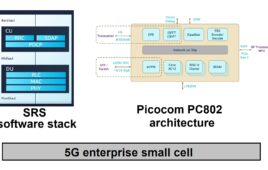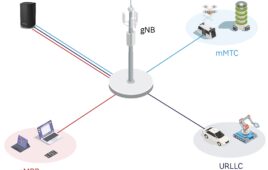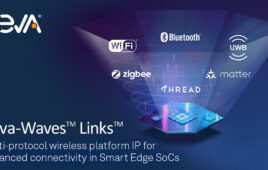Mimosa Networks, a provider of cloud-managed, hybrid fiber-wireless networks, announced what it claimed are the first commercially viable 5G fixed wireless internet architectures: the urban MicroPoP and rural GigaPoP.
Both architectures feature Mimosa’s new proprietary Spectrum Reuse Synchronization (SRS) technology, which utilizes Massive MIMO and antenna beamforming to scale wireless networks with expanded capacity and bandwidth. The SRS technology also employs precise time coordination of transmissions, network wide, to eliminate interference caused by other nearby radios. This allows a single access point (AP) to efficiently reuse channels rather than wasting spectrum to avoid interference.
“Our approach introduces wireless where fiber ends, and scales to connect dense urban and hard to reach rural homes at a fraction of the cost of fiber-to-the-home,” Mimosa CEO Brian Hinman commented. “With this announcement, we are now at the point where we are able to fulfill Mimosa’s founding vision. We are excited to see the rapid growth of new business opportunities as we usher in the 5G fixed wireless era.”
While Mimosa’s SRS technology is spectrum-agnostic, the company said when it is deployed in sub-6 GHz frequencies its solutions can thrive where millimeter wave solutions struggle in near- and non-line-of-sight areas.
Procera Networks rolled out a joint solution with Brocade that combines Brocade’s Envision Fabric visibility product line with Procera’s eVolution Virtual Experience Probe to give mobile operators greater visibility and real-time access to deeper network, subscriber, and traffic intelligence.
According to Procera, the solution is designed to meet demand for better understanding of subscriber behaviors and how this impacts the OTT services they use. The new solution focuses on subscriber service and application usage behavior, instead of just characteristics of overall network performance to pull deeper insights from subscriber traffic. These insights can then be used for advanced QoE management and the delivery of highly differentiated offerings, the company said.
The new product can identify more than 2,800 OTT applications, types of device in use, locations, routes and peering links crossed, and subscriber service plans.
Affirmed Networks, a provider of virtualized mobile networks, introduced an end-to-end solution that enables mobile operators to profitably deliver IoT services.
Affirmed said the new solution expands on its existing IoT solution to deliver additional capabilities including NarrowBand IoT (NB-IoT) and the Affirmed IoT Service Platform. Through a new partnership with Tech Mahindra, the IoT Service Platform integrates with critical enterprise systems and data, allowing mobile operators to create and deliver valuable IoT services.
By adding a fullyvirtualized NB-IoT solution, Affirmed Networks now enables mobile operators to support secure cellular connections to devices that are located in remote areas with limited coverage and power. The solution includes mobile core functions optimized for NB-IoT such as Cellular IoT Serving Gateway Node (C-SGN), Service Capability Exposure Function (SCEF), and the Service Capability Server (SCS), that allow mobile operators to deliver a wide spectrum of IoT services in accordance with the latest 3GPP standards.
Affirmed Networks’ 5G-ready IoT Solution also supports advanced capabilities related to network slicing and Control and User Plane Separation (CUPS) architecture. Network slicing allows mobile operators to offer customized services by customer, industry, or vertical segment over a single virtualized network. The CUPS architecture enables operators to separate the core network, allowing for centralized and distributed deployments.
Affirmed Networks’ IoT Solution is interoperable with a wide array of third-party solutions, and the platform provides mobile operators with essential functionality in the areas of analytics, billing, security, application enablement, and device management. Tech Mahindra also contributes enterprise domain expertise and capabilities for connecting devices to the critical information and applications residing within the enterprise.
Affirmed Networks will be at Mobile World Congress in Hall 2.
Radisys Corporation, a services acceleration company, has open sourced its LTE RAN software, making it available under the Apache 2.0 license for ON.Lab’s open Mobile-CORD (Central Office Re-architected as a Datacenter) 5G architecture. The M-CORD reference solution brings the CORD framework to the mobile edge of the network for 5G services. By delivering an open source RAN for M-CORD, Radisys said it is enabling communications service providers to fast track their migrations from the traditional Central Office to virtualized data centers to gain the benefits of disaggregation for virtualization, network slicing for scalability, and 5G architecture for connectionless mode.
Radisys’ own M-CORD solution is a compilation of the company’s open source LTE RAN and EPC reference architecture pre-integrated and deployed on its DCEngine platform – an open hardware solution based on the OCP-ACCEPTED CG-OpenRack-19 specification from the Open Compute Project.
“By making Radisys’ LTE RAN software open sourced, Radisys further cements its commitment to the open source movement as integral part of our corporate strategy to enable communications service providers to avoid vendor lock-in and reduce time-to-market,” Brian Bronson, president and CEO of Radisys, commented. “Radisys’ LTE RAN software is field-hardened and proven globally in deployments around the world. By bringing our LTE RAN to the open source community through M-CORD, we can enable a 5G platform today while also focusing on delivery of a 5G RAN solution.”
Radisys’ open source LTE RAN reference solution for the M-CORD reference architecture will be available next month. The company will be exhibiting at Mobile World Congress in Hall 5.



